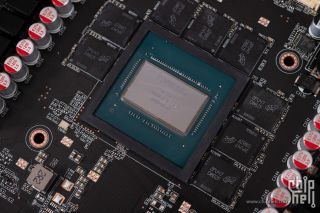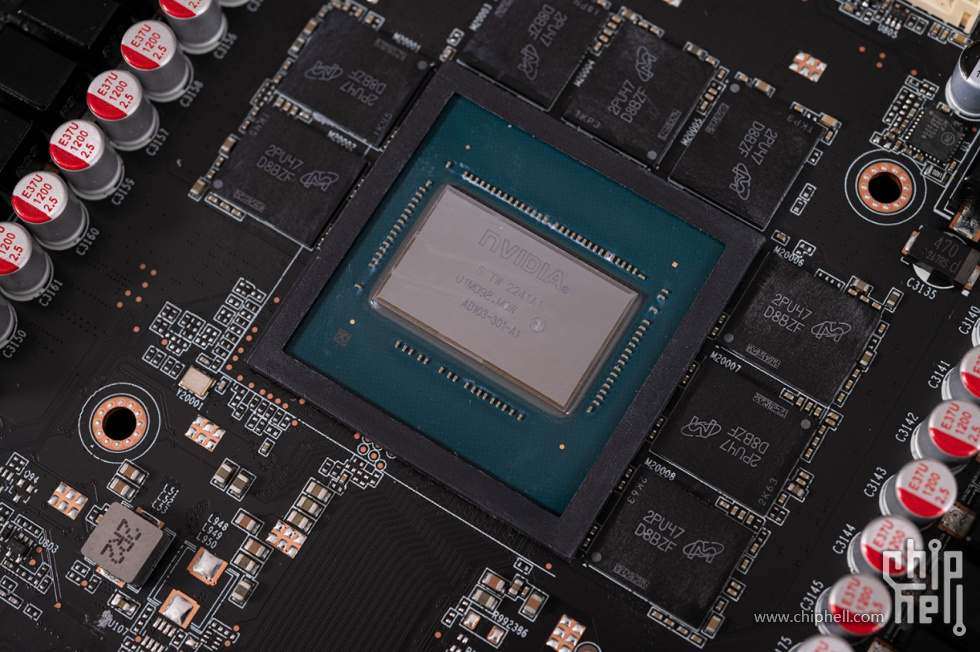
Nvidia's New RTX 4080 GPU Die Pictured

A Chiphell (opens in new tab) forum member has shared an image of the new AD103-301 silicon that will go into the GeForce RTX 4080, one of the best graphics cards. The revised die will potentially allow graphics card manufacturers to lower the GeForce RTX 4080’s bill of material (BOM) and increase their margins. The new AD103-301 silicon won’t bring any performance or power enhancements to the GeForce RTX 4080. The poster claims the die will only help enhance the Ada Lovelace graphics card’s stability.
Chinese news outlet HKEPC believes that the voltage comparator is why Nvidia revised the AD103 die. The voltage comparator reportedly resides inside the GPU itself, so it’s no longer present on the PCB. A comparator is responsible for comparing the input voltage with a reference voltage. It modifies the output depending on whether the input voltage is higher or lower than the reference voltage.
The change in the placement of the voltage comparator logically means Nvidia’s partners will have to update the PCB designs for their custom GeForce RTX 4080 graphics cards. However, the forum poster claims that AD103-301 doesn’t significantly alter the GeForce RTX 4080’s BOM and that there isn’t any reduction in manufacturing costs. According to HKEPC’s estimates, going from AD104-250 to AD104-251 commands a $1 decrease in BOM for the forthcoming GeForce RTX 4070. So it’s reasonable to think that the shift from AD103-300 to AD103-301 could bring similar benefits.
Vendors have already dialed in designs for their custom models. Redesigning the PCB also comes at a cost, so it certainly makes us wonder if there’s a more significant reason behind the updated silicon than just moving the voltage comparator.
Even if there’s a cost saving associated with the AD103-301 silicon, we likely won’t see it with the GeForce RTX 4080’s MSRP. For the vendors, however, it’s another story. As small as the manufacturing BOM reduction may be, it’ll eventually add up when you consider that manufacturers produce tens and thousands of units.
The Chiphell user has stated that the AD103-301 silicon has been around for “a long time,” and the die is probably already inside many GeForce RTX 4080 graphics cards currently on the market. Although there is no rumored performance variation between the old and new silicon, it would still be intriguing to test out the latter to corroborate the rumors.


